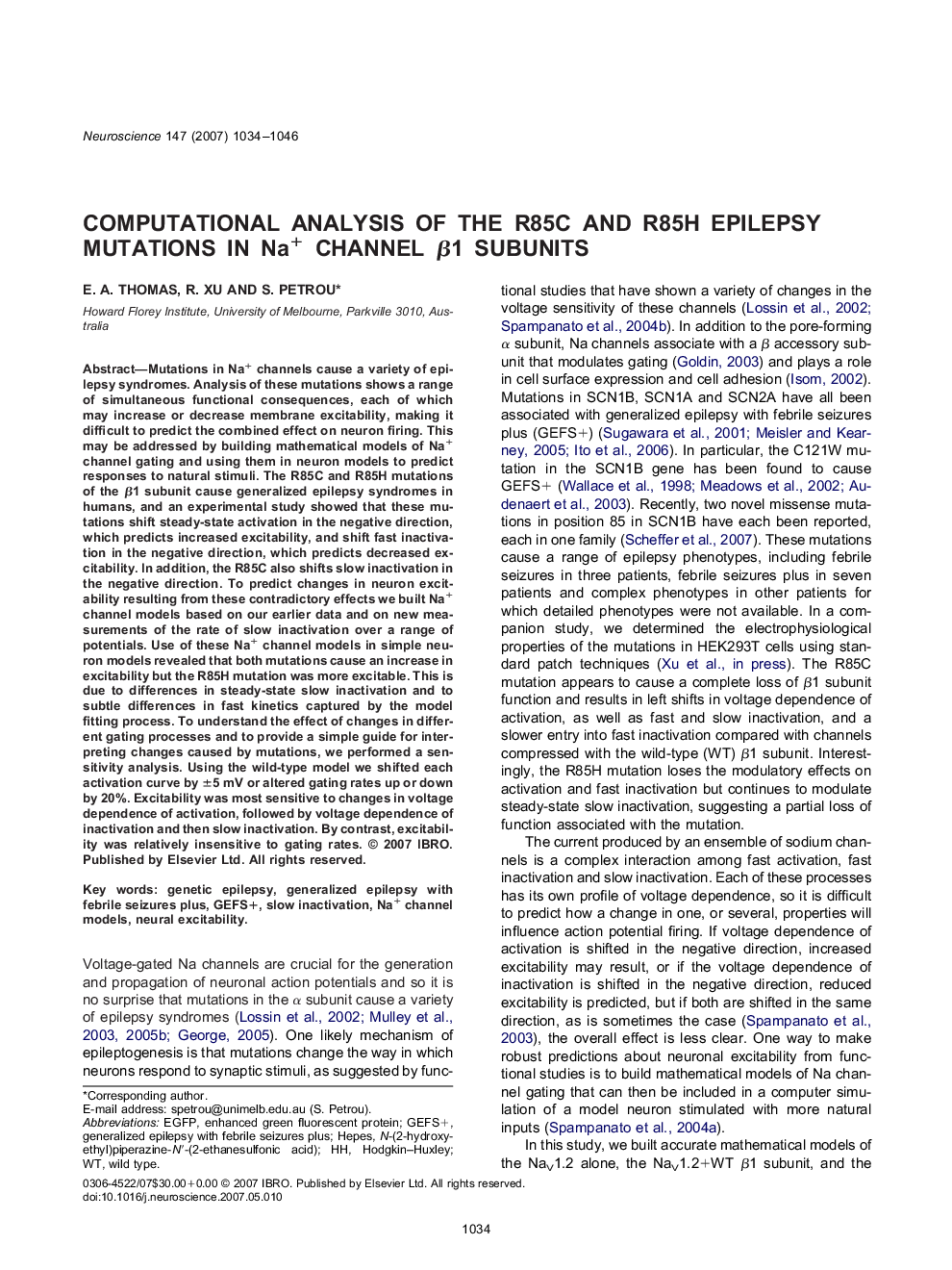| کد مقاله | کد نشریه | سال انتشار | مقاله انگلیسی | نسخه تمام متن |
|---|---|---|---|---|
| 6278315 | 1295814 | 2007 | 13 صفحه PDF | دانلود رایگان |

Mutations in Na+ channels cause a variety of epilepsy syndromes. Analysis of these mutations shows a range of simultaneous functional consequences, each of which may increase or decrease membrane excitability, making it difficult to predict the combined effect on neuron firing. This may be addressed by building mathematical models of Na+ channel gating and using them in neuron models to predict responses to natural stimuli. The R85C and R85H mutations of the β1 subunit cause generalized epilepsy syndromes in humans, and an experimental study showed that these mutations shift steady-state activation in the negative direction, which predicts increased excitability, and shift fast inactivation in the negative direction, which predicts decreased excitability. In addition, the R85C also shifts slow inactivation in the negative direction. To predict changes in neuron excitability resulting from these contradictory effects we built Na+ channel models based on our earlier data and on new measurements of the rate of slow inactivation over a range of potentials. Use of these Na+ channel models in simple neuron models revealed that both mutations cause an increase in excitability but the R85H mutation was more excitable. This is due to differences in steady-state slow inactivation and to subtle differences in fast kinetics captured by the model fitting process. To understand the effect of changes in different gating processes and to provide a simple guide for interpreting changes caused by mutations, we performed a sensitivity analysis. Using the wild-type model we shifted each activation curve by ±5 mV or altered gating rates up or down by 20%. Excitability was most sensitive to changes in voltage dependence of activation, followed by voltage dependence of inactivation and then slow inactivation. By contrast, excitability was relatively insensitive to gating rates.
Journal: Neuroscience - Volume 147, Issue 4, 29 July 2007, Pages 1034-1046